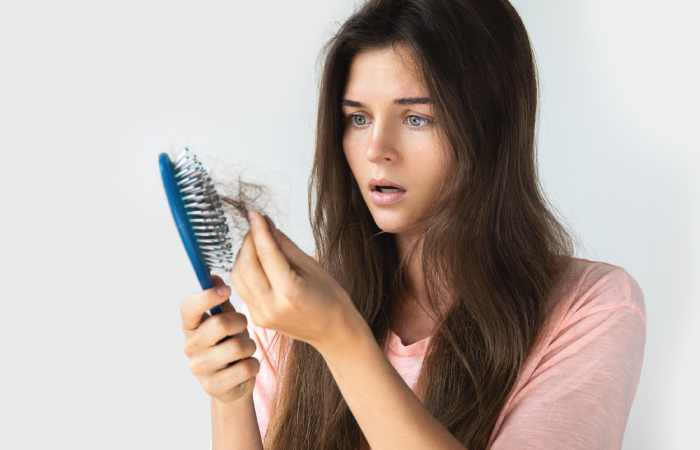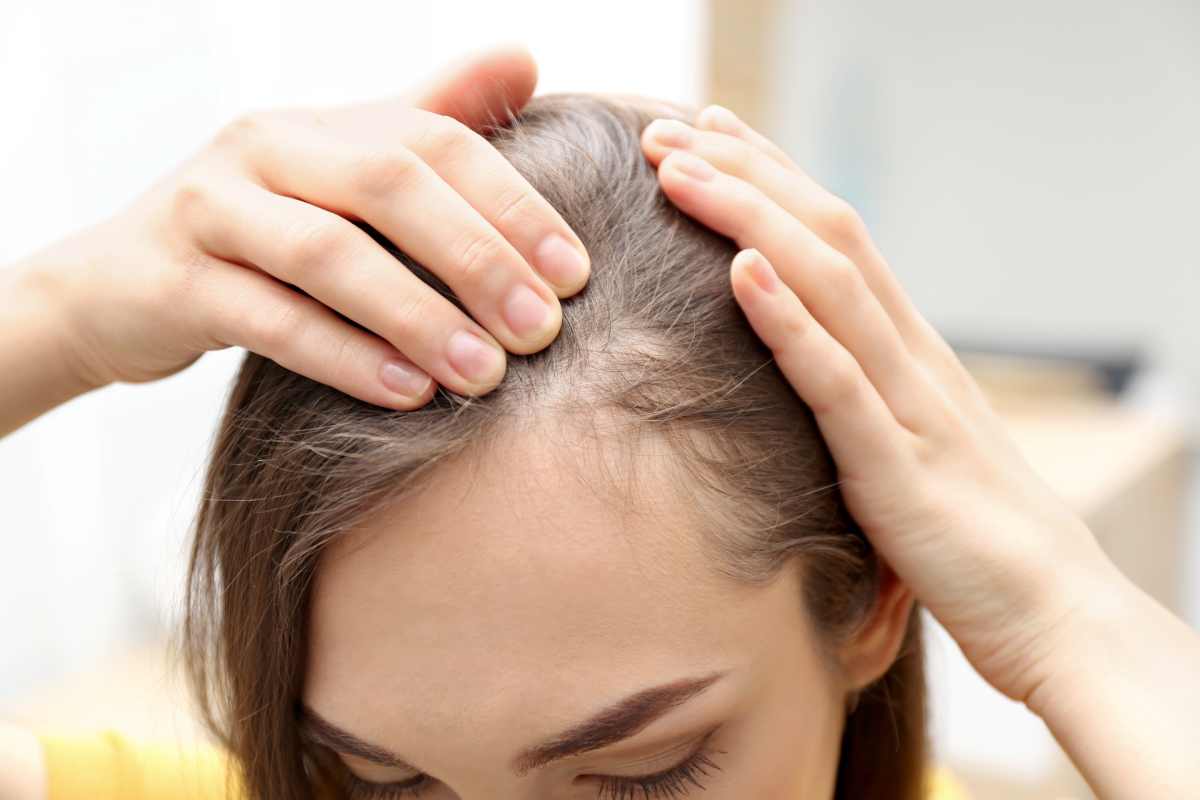We all shed hair. It’s a completely natural part of the hair growth cycle. But are you seeing more hair in the shower drain than usual? Does your brush seem to be collecting from a small forest every time you style your hair? You’re not alone. Hair loss is a common concern that can strike men and women alike. It can be a real blow to your confidence, leaving you wondering what’s causing the disappearing act and what you can do to stop it.
And so, this article is here to shed light on the reasons behind hair loss and share with you some tips and strategies on how to fight back.
Table of Contents
The Common Suspects of Hair Loss

Hair loss can be caused by a variety of factors, some temporary and others more permanent. Here are a few of the most common culprits:
Genetics
Androgenetic alopecia, more commonly known as male pattern baldness or female pattern baldness hair loss, is the most common cause of hair loss. It’s a hereditary hair loss, meaning it runs in families, and is caused by a sensitivity to hormones like testosterone. Men typically experience a receding hairline or bald spots at the crown, while women experience thinning hair across the scalp.
Stress
Feeling overwhelmed? Chronic stress can definitely take a toll on your hair. When your body is in fight-or-flight mode, hair growth gets put on the back burner. If you’ve noticed during the pandemic, many people were experiencing COVID hair loss due to the emotional stress and sickness brought by the pandemic. The good news is that once the stressor subsides, your hair growth should return to normal, and the hair shedding recedes.
Hormonal Imbalances
Hormonal changes and fluctuations can disrupt your hair growth cycle. Pregnancy, childbirth, menopause, and even certain medications that affect hormone levels can cause temporary hair loss. Don’t worry though as this type of loss usually resolves itself once your hormones settle back down.
Medical Conditions
Certain medical conditions, like thyroid disorders, scalp infections, and autoimmune diseases like alopecia areata, can cause hair loss. If you suspect an underlying medical condition might be the cause, it’s important to consult a doctor for proper diagnosis and treatment.
Poor Nutrition
Believe it or not, what you eat can impact your hair health. Nutrient deficiencies in iron, protein, biotin, and other essential nutrients can lead to hair loss.
Hair Care Habits
Tight hairstyles like braids, cornrows, or ponytails can put a lot of tension on the scalp, leading to a type of hair loss called traction alopecia. Heat styling tools and harsh chemical treatments can also damage hair and contribute to hair loss.
By identifying the common culprits, you can work with your healthcare provider to develop a personalized hair loss treatment plan. You may also consult a team of reputable dermatologists from PinnacleSkin.com or other similar dermatology clinics to help you overcome your sudden hair loss experience.
Treatment Options For Hair Loss
Now that you have a better understanding of what might be causing your hair loss, let’s explore some options for getting your mane back on track. Here are a few approaches to consider:
Medications
Minoxidil is a topical medication available over-the-counter that can help stimulate hair growth. Meanwhile, Finasteride is a prescription medication used to treat male-pattern baldness. It works by blocking the conversion of testosterone to a more potent form that can contribute to hair loss. Ideally, discuss these options first with your healthcare provider to see if they’re right for you.
Hair Loss Shampoos and Supplements
While not a cure-all, certain hair products, shampoos, and supplements formulated with ingredients like ketoconazole or saw palmetto might help promote hair regrowth and scalp health. However, research on their effectiveness is ongoing, so it’s important to manage your expectations.
Low Level Laser Therapy (LLLT)
This treatment involves using lasers to deliver low-level light energy to the scalp. It’s a relatively new approach, and while some studies have shown promise, more research is needed to determine its long-term effectiveness.
Hair Transplant Surgery
For those seeking a more permanent solution, hair transplant surgery is an option. This procedure involves transplanting healthy hair follicles from a donor area of the scalp to the bald patches or thinning area. It’s a complex surgery and requires careful consultation with a qualified dermatologist or hair transplant surgeon.
There’s no one-size-fits-all solution for hair loss. Thus, the key is to work closely with your doctor or dermatologist to identify the underlying cause of your hair loss and develop a personalized treatment plan that’s right for you.
Preventive Measures for Healthy Hair
While some hair loss is inevitable, there are more steps you can take to keep your hair healthy and promote growth:
Maintain a Balanced Diet
Nourish your hair from the inside out with a diet rich in essential nutrients. Aim for plenty of protein, iron, vitamins A, C, D, and E, and omega-3 fatty acids.
Manage Stress
Chronic stress can disturb your hair growth. Find healthy ways to manage stress, such as exercise, yoga, meditation
Gentle Hair Care
Be kind to your locks! Avoid tight hairstyles that pull on the scalp and limit your use of heat styling tools and harsh chemical treatments.
Scalp Massage
Regular scalp massages can improve circulation and promote hair growth. Use your fingertips to gently massage your scalp in circular motions for a few minutes a day.
Key Takeaway
Remember, hair loss is a common concern, but it doesn’t have to control your life. With patience and the right treatment plan tailored to your needs, you can regain a full, healthy head of hair and your confidence.

